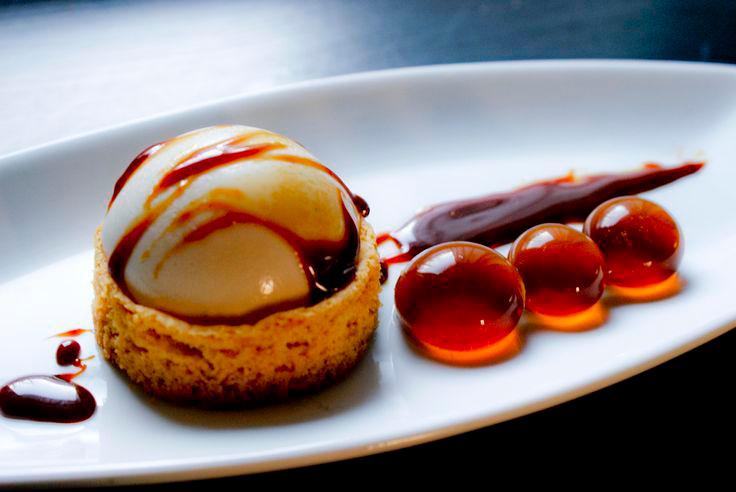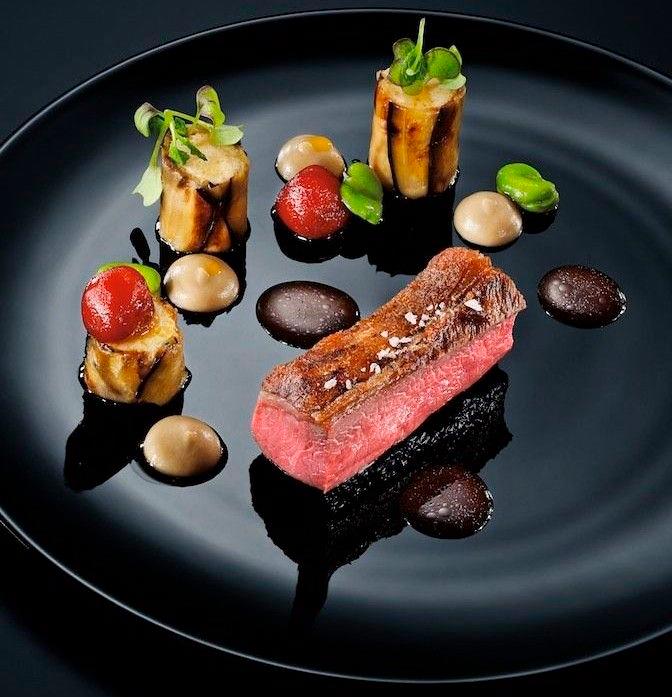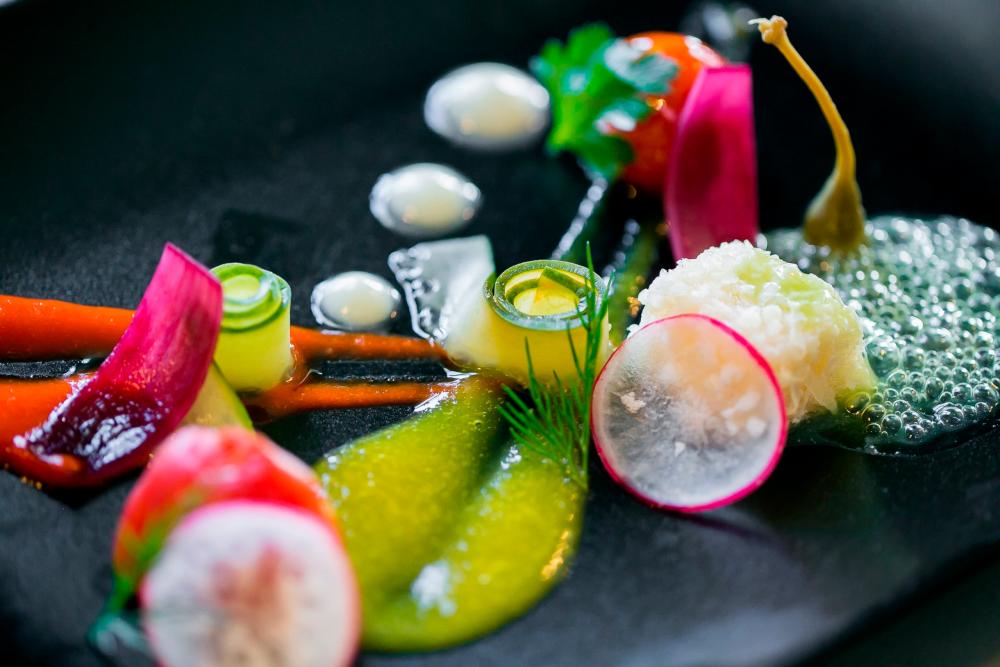OVER the past years, science has revolutionised the food industry. From traditional food preservation techniques that were passed down from our ancestors to modernist techniques like ‘sous vide’ and ‘spiralising’ that often make use of advanced kitchen technologies. These contemporary food techniques are usually implemented by modern and high-end restaurants.
Unbeknownst to many, the food service industry has several interesting modern trends up its sleeves as well. One of the most intriguing modern trends is molecular gastronomy, a highly complex technique that places food preparation in a whole new direction.
What is molecular gastronomy?

Molecular gastronomy is a contemporary cuisine technique that incorporates the principles of chemistry, biology, physics and various methods to prepare, transform and plate food in interesting and artistic ways.
Pioneered by a French chemist, Hervé This, and a Hungarian physicist, Nicholas Kurti, in 1988, the main purpose of molecular gastronomy is to understand the culinary world more in-depth and experiment with dishes in restaurants and your own home. Some of the devices used to execute this technique are rotary evaporators, sintered glass, ultrasonic probes and filters.
Aside from infusing science and using advanced equipment to prepare a dish, molecular gastronomy uses specific ingredients that are commonly used in the food industry.
For example, it uses ingredients like calcium lactate, sodium alginate, ascorbic acid and phenolic compounds. Molecular gastronomy come to life due to the interactions of various ingredients that result in different effects. Each recipe is handled delicately because of the fundamental chemical, biological and physical techniques.
A prime example of molecular gastronomy is souffle. Instead of turning into a pancake, a souffle ‘expands’ because of the proteins that create the egg whites. Tiny air bubbles are formed when the white eggs are whisked. As you bake it in the oven, the air bubbles will expand and cause the dish to puff up. Other molecular gastronomy recipes are foam curry, smoked beer and cocktails, arugula spaghetti and disappearing transparent ravioli. However, molecular gastronomy doesn’t just limit chefs or home cooks to experiment with food, one can experiment with drinks and create solid cocktails and fruit jelly caviars as well. The crucial point of molecular cooking is its specific food preparation techniques.
Molecular cooking techniques

Gelification
The gelification technique is a method of formulating gel. In simpler terms, it is the process of transforming liquid to solid-state. One can sculpt and transform any flavours into yummy pearls, ravioli or spaghetti using agents such as gelatin, agar-agar, gellan gum, iota carrageenan and kappa carrageenan. Gelification is commonly used in the industry and the texture can vary from soft and elastic to firm and fragile, depending on the nature and densities of the gelling additives that are used. For this reason, innovative chefs can conduct their experiments and achieve the exact desired texture.
Sous Vide
This avant-grande method employs accurate temperature control to produce consistent and high-end restaurant quality outcomes. Pronounced “sue-veed”, premium restaurants have been utilising this technique for years to cook dishes to the exact degree of doneness that they desire. Some of the best foods to cook sous vide are tougher cuts of meat, pork, lamb, filleted fish, carrots and fillet steak. In French, sous vide is defined as “under vacuum”, which is the process of sealing food in a vacuum-sealed bag and it is slow-cooked to a very accurate temperature in a water bath. Sous vide produces outcomes that can’t be achieved by other techniques. It amplifies the taste of the food and makes it more moist, juicy and tender, as the food cooks in its juices.
Emulsification
Emulsification is creating foams or airs that melt in your mouth. For example, substances like oil and water can’t dissolve in each other. But this cooking technique allows the oil to break down into tiny droplets that can remain hanging in the water. Emulsifiers are particles that consist of a fat-soluble section and a water-soluble section. The fat-soluble part usually glues itself to the oil whereas the water-soluble part glues itself to water and creates an efficient barrier around the droplets. To elucidate further, emulsifiers are present in various forms such as casein found in milk proteins and lecithin that are found in egg yolks. To achieve this cooking technique, all you need is an emulsifier and a whisk. The utilisation of this technique is endless, you can create balsamic foam to place over strawberries or chive foam to pair it with broiled mussels.
Spherification
Spherification is one of the most common techniques that you’ll see done by restaurants. It is defined as the process of producing soft, pulpy spheres that look like pearls or caviar eggs. It uses chemical reactions to ‘capture’ liquid elements with a highly thin, bland membrane to form clear spheres. Spherification occurs when calcium chloride and alginate gel together when combined. To illustrate, grape soda that is blended with calcium chloride and dropped one drop at a time into a mixture of alginate and water, every drop will immediately form a sphere. This technique allows one to transform any liquid elements into a yummy edible sphere to pair with dishes and drinks.
Transglutaminase
One of the greatest and most enjoyable molecular cooking techniques are transglutaminase, also known as “meat glue”. It’s a bland enzyme that can attach to foods that are rich in protein. For example, meats. Coming in the form of powder, the enzyme is brushed into the two sides of meat and are pressed firmly together for a certain period of time for it to fully set and bind together. The fun part about this technique is you can shape meats into various new shapes, or attach two thin cuts of meat to get a thick steak.
Smoking
This technique will certainly make you feel like a mad scientist in the kitchen. The smoking technique makes use of a smoking gun, a handheld food smoker that allows you to smoke cocktails, beer, dressings, gravy and many more. The ability to smoke food without using heat creates new mind-blowing flavours and unusual combinations. The smoking results flavour are usually subtle and it elevates the food or drinks presentation. Some of the smoking techniques are smoking firm foods in a plastic bag or container with plastic wrap, smoking liquids in a glass or shaker or smoking butter in a stand mixer.
Deconstruction
Deconstruction is the art of disintegrating a dish into its individual parts and recreating the presentation. Often, a deconstructed dish has various elements of a dish that are presented together on a plate. For instance, you can plate lasagna by separating its components like tomato soup, cheese curds and small pieces of pasta on their own. Deconstruction provides a ground to produce a unique presentation and plating technique to your molecular gastronomy invention.
Edible Films
Derived from potato starch and soy lecithin, edible films have a neutral taste. Despite its clear appearance and its ability to dissolve instantly in water elements, edible films do not melt in oil or bases that have low water content. Since it comes in various shapes and sizes, you can upgrade your dish and add a unique dimension with this paper-thin film. Other than that, you can instil various ingredients into your edible film recipe to add more colour and flavour such as vanilla or fruit juice. Molecular gastronomy is becoming increasingly prevalent in other parts of the world because it bridges the gap between the social, creative and technical outcomes of food and food prep.
While traditional cooking techniques are great, there is no harm in trying something new to create a mutual social experience of inventive culinary and pleasure.










